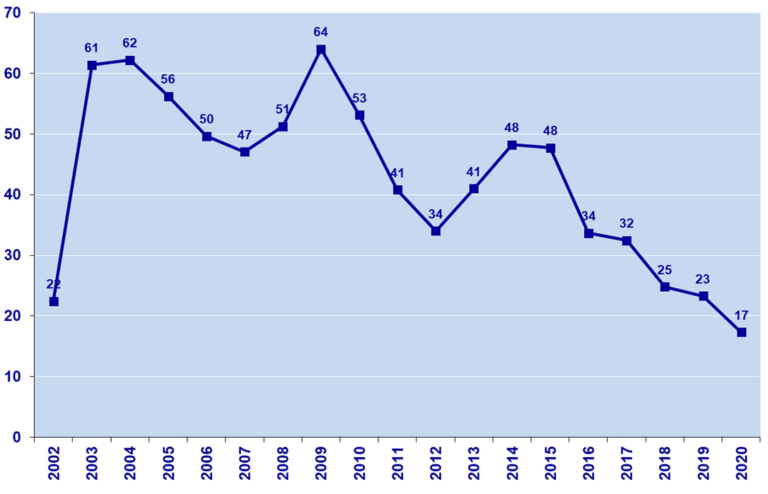As Digital Payment Fraud is on the Rise, Euro Banknote Counterfeiting drops to Historically Low Level
Digital fraud has adapted to the pandemic
One of the many effects of the Covid-19 pandemic has been an acceleration of the use of digital payments, driven by social distancing measures and exaggerated fears that the virus could linger for weeks on notes and coins. This shift has deepened concerns about potential cyber security risks for consumers and businesses, as well as new kinds of fraud.
Fraudsters have adapted their tactics to exploit the fear, uncertainty caused by the pandemic – including resorting to fraudulent online messages offering Covid-19 medical support and relief payments. These scams ask individuals to verify their personal information such as passwords, accounts and other paymentA transfer of funds which discharges an obligation on the part of a payer vis-à-vis a payee. More information, in order to steal moneyFrom the Latin word moneta, nickname that was given by Romans to the goddess Juno because there was a minting workshop next to her temple. Money is any item that is generally accepted as payment for goods and services and repayment of debts, such as taxes, in a particular region, country or socio-economic context. Its onset dates back to the origins of humanity and its physical representation has taken on very varied forms until the appearance of metal coins. The banknote, a typical representati... More. Over 900,000 spam messages, 700 malware attacks and 48,000 malicious domains were discovered in the first four months of 2020, according to an Interpol report – all mentioning coronavirus.
17 Counterfeits per million genuine notes
Meanwhile, some 460,000 counterfeitThe reproduction or alteration of a document or security element with the intent to deceive the public. A counterfeit banknote looks authentic and has been manufactured or altered fraudulently. In most countries, currency counterfeiting is a criminal offence under the criminal code. More euroThe name of the European single currency adopted by the European Council at the meeting held in Madrid on 15-16 December 1995. See ECU. More banknotes were withdrawn from circulation in 2020, a decrease of 17.7% when compared with 2019 says the ECB. €20 and €50 notes continued to be the most counterfeited banknotes, jointly accounting for about two thirds of the total. 94.5% of counterfeits were found in euro area countries, while 2.8% were found in non-euro area EU Member States and 2.7% in other parts of the world. The likelihood of receiving a counterfeit is very small, as the number of counterfeits remains very low compared to the over 25 billion euro banknotes in circulation. In 2020, 17 counterfeits were detected per 1 million genuine banknotes in circulation, a historically low level.
Number of counterfeits detected annually per 1 million genuine notes in circulation
Source: ECB
Low-quality reproductions are continuously withdrawn from circulation. All are easy to detect as they have no security features, or only very poor imitations of them. Ever since the first series of euro banknotes was issued, the EurosystemThe Eurosystem comprises the European Central Bank and the national central banks of those countries that have adopted the euro. More has encouraged people to be vigilant when receiving banknotes. The ECB advises to check notes by using the simple “feel, look and tilt” method described in the dedicated section of the ECB’s website and on the websites of the national central banksIn general, the expression refers to the central banks of different countries. More. The Eurosystem also helps professional cashMoney in physical form such as banknotes and coins. More handlers ensure that banknote-handling and processing machines can reliably identify counterfeits and withdraw them from circulation.
Using counterfeits for payments is a criminal offence that may lead to prosecution. The Eurosystem supports law enforcement agencies in their fight against currencyThe money used in a particular country at a particular time, like dollar, yen, euro, etc., consisting of banknotes and coins, that does not require endorsement as a medium of exchange. More counterfeiting. The Eurosystem has a duty to safeguard the integrity of euro banknotes and to continue improving banknoteA banknote (or ‘bill’ as it is often referred to in the US) is a type of negotiable promissory note, issued by a bank or other licensed authority, payable to the bearer on demand. More technology. The second series of banknotesSee Family of banknotes. More – the Europa series – is even more secure and is helping to maintain public trust in the currency.